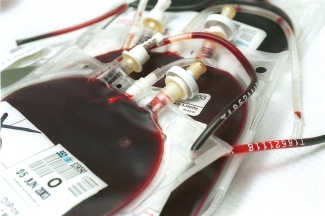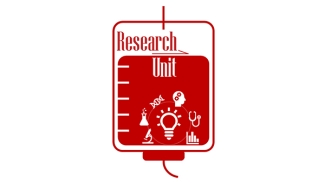Fibrinogen replacement products: how do they stack up against each other?
Thursday, March 12, 2020 Tricia Abe
For patients who have cardiac surgery, the risk of severe blood loss is high if they have a condition called acquired hypofibrinogenemia — this means they have an undersupply of an essential blood clotting protein called fibrinogen. For these patients, doctors aim to minimize bleeding by giving them a fibrinogen replacement product to restore clotting factors to normal levels — either cryoprecipitate or fibrinogen concentrate — which restores clotting factors to normal levels.
Although both products are used in hospitals around the world, not much is known about how they compare in terms of limiting blood loss and adverse reaction rates; in North America, most hospitals use cryoprecipitate while most European hospitals use fibrinogen concentrate. The primary reason European countries made this transition over a decade ago was a concern about transmitting infectious diseases to patients with cryoprecipitate, which, unlike fibrinogen concentrate, is not treated to inactivate viruses and requires 10 donors to make a single dose.
A large-scale study conducted at 11 hospitals across the country with funding support from Canadian Blood Services to the QUEST research team at the University of Toronto, compared the effectiveness of cryoprecipitate and fibrinogen concentrate in controlling post-operative bleeding. The study’s key finding is that fibrinogen concentrate is equivalent to cryoprecipitate, the standard treatment in Canada.

Dr. Jeannie Callum, one of the study’s lead researchers, says the findings could have an impact on how cardiac patients are treated in Canada.
“This study shows that for hospitals where cryoprecipitate is the standard treatment for patients with acquired hypofibrinogenemia, it’s safe to switch to fibrinogen concentrate to control post-operative bleeding,” explains Dr. Callum.
“Given the other benefits of fibrinogen concentrate — it’s a purified product, pathogen-reduced, and easier to administer — this is one more step we can take to ensure the safety of patients.”
To learn more about the study, read our Research Unit.
To see a recorded webcast of Dr. Keyvan Karkouti and Dr. Kathryn Webert discussing the impact of the study, visit this site and select the UofT Transfusion Medicine Rounds presentation for Jan. 23, 2020.
Canadian Blood Services – Driving world-class innovation
Through discovery, development and applied research, Canadian Blood Services drives world-class innovation in blood transfusion, cellular therapy and transplantation—bringing clarity and insight to an increasingly complex healthcare future. Our dedicated research team and extended network of partners engage in exploratory and applied research to create new knowledge, inform and enhance best practices, contribute to the development of new services and technologies, and build capacity through training and collaboration. Find out more about our research impact.
The opinions reflected in this post are those of the author and do not necessarily reflect the opinions of Canadian Blood Services nor do they reflect the views of Health Canada or any other funding agency.
Related blog posts
Our latest Centre for Innovation ResearchUnit is a collaborative effort between Centre for Innovation adjunct scientist, Dr. Jelena Holovati, and Canadian Blood Services scientists, Dr. Donald Branch and Dr. Jason Acker. For patients with rare blood types, we perform cross-matching tests to match...
This month’s Research Unit describes efforts by researchers to create a simulation and modelling study to understand how the risk of transfusion-transmission of HTLV would change if the screening were modified.
In this study, Dr. William Sheffield and Craig Jenkins from the Centre for Innovation tested levels and activities of important plasma factors for coagulation in recovered plasma. They found that the way in which plasma is manufactured from whole blood impacts the composition of recovered plasma.

